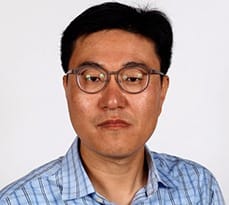Jisok Kang, a CERF Research Associate at the Cambridge Centre for Finance (CCFin), and his coauthors, Kee-Hong Bae and Albert Tsang, investigate the executive and CEO pay gap between public and private firms. The main focus of the project is to test two long-standing, competing hypotheses on public firms’ executive pay.


The first hypothesis is the entrenchment hypothesis: public firms are entrenched by powerful CEOs. They control the board of directors and set their own pay high. There has been significant increase in CEO pay of large, public firms in the United States because of the lack of relevant governance systems to control executive pay, according to the entrenchment view.
The other one is the optimal contracting hypothesis that CEO pay is mainly determined by market forces: CEO remuneration has recently increased dramatically because managing a public firm is more complex than before and CEOs assume more regulatory and governance risks.
Many studies in the literature have examined this issue but investigating only public executive pay generates a partial story and the simple increase in the pay of public firm executives does not necessarily support the entrenchment hypothesis. Researchers need a benchmark against which the public firm executive pay is measured to evaluate whether the public firm executive pay level is set high without CEOs assuming risks and responsibilities. Jisok and his coauthors deal with the ‘compared to what’ issue effectively on this project. They use private firm executive pay as a benchmark to examine whether public firm executive pay is excessive or not.
The main findings of the paper are: 1) the executive pay gap between public and private firms has widened after IFRS (International Financial Reporting Standards) adoptions and governance reforms; 2) especially after governance reforms, public firm executive pay has become more sensitive to performance measures such as stock returns, Tobin’s Q, and ROA. These findings largely support the optimal contracting hypothesis.

